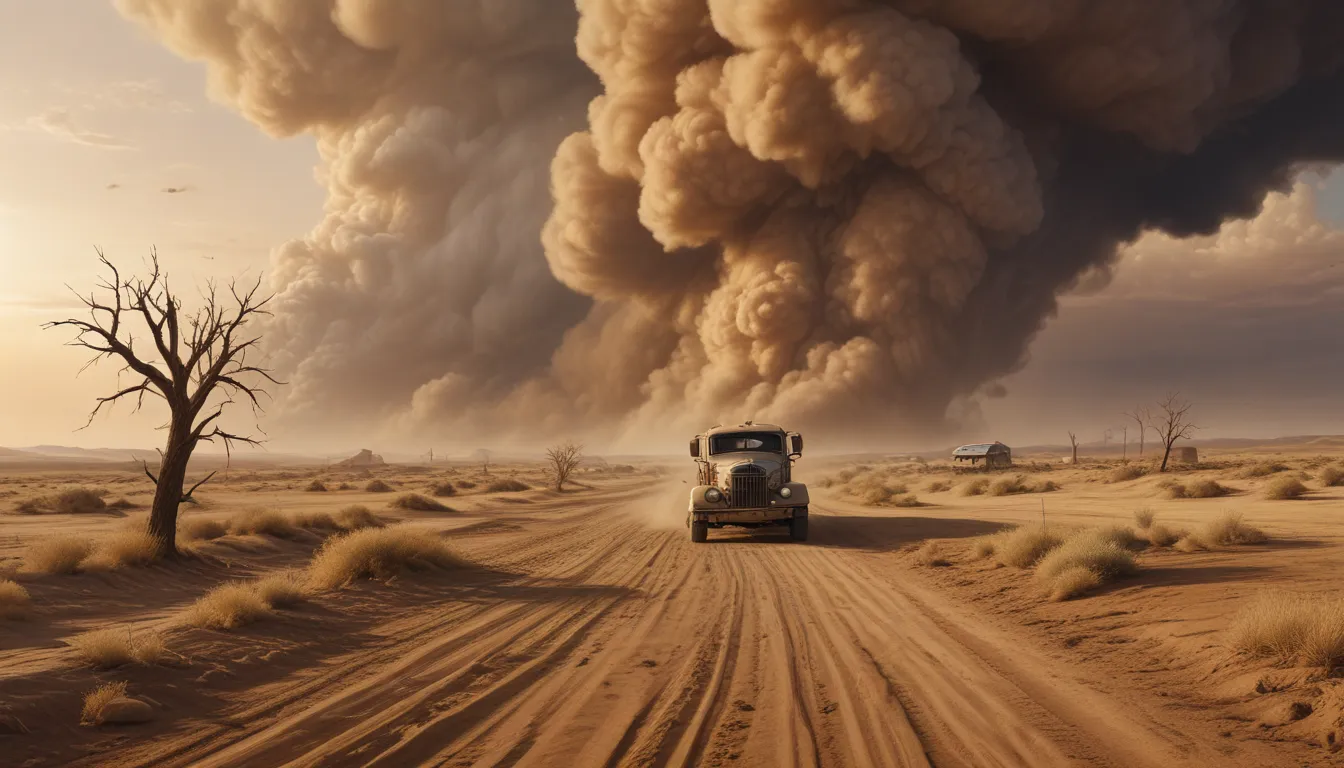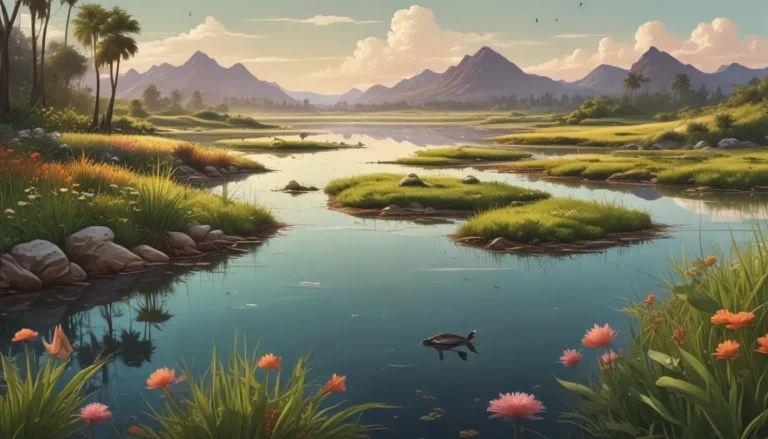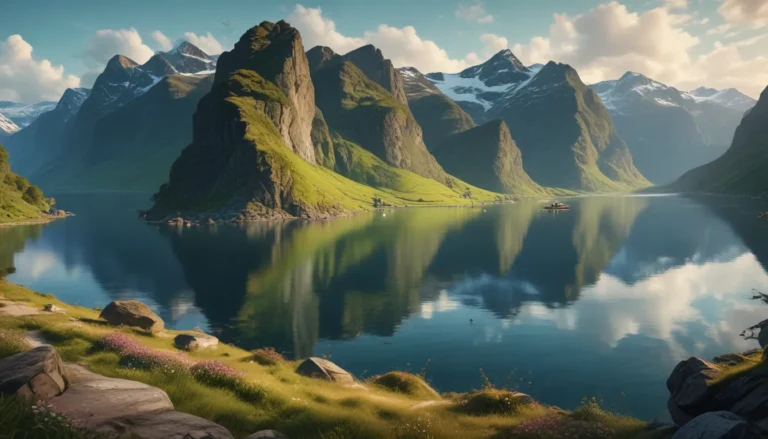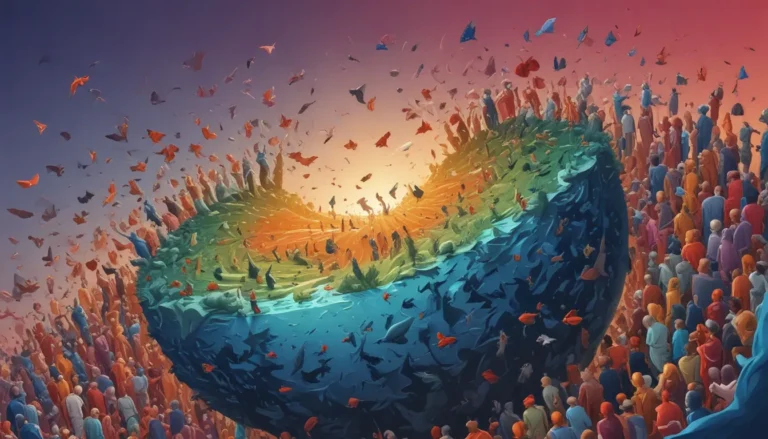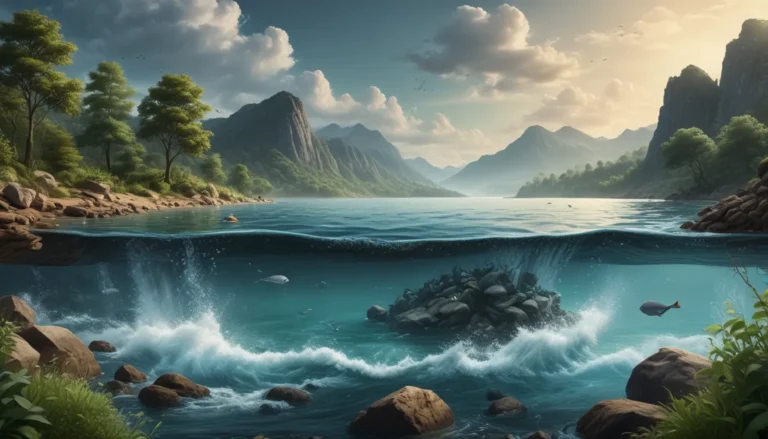A Note About Images: The images used in our articles are for illustration purposes only and may not exactly match the content. They are meant to engage readers, but the text should be relied upon for accurate information.
The Dust Bowl of the 1930s, also known as the “Dirty Thirties,” stands out as a significant period in American history characterized by severe dust storms that ravaged the Great Plains. This article delves into the depths of this environmental disaster, exploring its causes, effects, and lasting impact on the region. Join us on a journey to uncover the Dust Bowl facts and understand the narrative behind this tumultuous time.
Unearthing the Origins of the Dust Bowl
The first storms of the Dust Bowl descended upon the United States in 1931, heralding a period of unprecedented environmental turmoil. A severe drought struck the Midwestern and Southern Plains, leading to crop failures and soil degradation. As the land was over-plowed and over-grazed, the stage was set for destructive dust storms driven by powerful winds. By 1934, the Great Plains were engulfed in the grip of a historic drought, with dust storms spreading far beyond their initial boundaries, affecting countless lives.
The Dust Bowl’s Turbulent Conclusion
After nearly a decade of relentless dust storms and widespread devastation, the Dust Bowl reached its conclusion in the fall of 1939. President Roosevelt’s Shelterbelt Project, initiated in 1937, sought to mitigate further erosion by planting trees across the Great Plains. Despite ongoing drought conditions, efforts to reduce dust levels succeeded in alleviating the catastrophic impact of the storms. Finally, the long-awaited rains arrived, bringing an end to the calamity that had gripped the nation for years.
Understanding the Dual Nature of the Disaster
The Dust Bowl was not merely a natural catastrophe but also a man-made crisis. Intensive farming practices, coupled with the lack of drought-resistant crops, exacerbated the effects of the drought and wind erosion. Farmers utilizing gasoline tractors over-plowed the land, leaving it vulnerable to the ravages of the elements. The convergence of environmental factors and human activities set the stage for a catastrophe of unparalleled proportions.
Recalling the Darkest Hour: Black Sunday of 1935
April 14, 1935, marked a dark chapter in the Dust Bowl saga with the occurrence of the infamous Black Sunday dust storm. This catastrophic event, known for its intensity and scale, engulfed cities from the Atlantic coast to inland regions. The massive dust cloud, accompanied by a mass exodus of insects and animals, struck fear into the hearts of residents who witnessed the apocalyptic scene unfold before their eyes.
Devastating Effects: From Suffocating Dust to Lethal Consequences
The ferocity of the dust storms was beyond comprehension, suffocating cattle, engulfing entire towns, and posing significant health risks to inhabitants. Dust pneumonia, also known as the “brown plague,” claimed countless lives, particularly impacting vulnerable populations such as infants and the elderly. The combination of malnutrition, respiratory ailments, and environmental hazards created a lethal environment for those living in the affected regions.
Battling Nature’s Wrath: Tales of Resilience in the Dust Bowl
In the face of mounting challenges, residents of the Dust Bowl region exhibited remarkable resilience and resourcefulness. From unconventional rainmaking rituals to desperate attempts to combat encroaching jackrabbits and grasshoppers, individuals employed creative strategies to cope with the harsh realities of their environment. Despite the adversities they faced, many chose to stay and confront the storms head-on, embodying a spirit of perseverance in the face of adversity.
Legacy of the Dust Bowl: Shaping National Consciousness and Economy
The impact of the Dust Bowl reverberated far beyond its immediate effects, leaving an indelible mark on the national psyche and economy. Migration patterns shifted as hundreds of thousands of individuals sought refuge in California, facing economic hardship and social upheaval. The New Deal programs implemented by President Roosevelt aimed to heal the land and provide assistance to those affected by the crisis, ushering in a new era of environmental and economic policies.
Glimpses of the Past: Dorothea Lange’s Lens on the Dust Bowl
The profound hardships of the Dust Bowl era found expression in the poignant photographs of Dorothea Lange, capturing the human faces behind the environmental tragedy. Her images, infused with a sense of empathy and resilience, serve as lasting testaments to the resilience of those who endured the tumultuous era. Through her lens, the Dust Bowl transcends mere historical events, becoming a poignant story of human perseverance in the face of adversity.
Echoes of the Past: Lessons from the Dust Bowl
As we reflect on the Dust Bowl, we are reminded of the enduring lessons it holds for us today. The intersection of environmental degradation, unsustainable farming practices, and the resilience of communities in the face of adversity speaks to the need for stewardship of our natural resources. By heeding the legacy of the Dust Bowl, we can forge a path towards environmental sustainability and resilient communities, ensuring that the tragedies of the past do not repeat themselves.
In conclusion, the Dust Bowl stands as a powerful reminder of the consequences of environmental neglect and the resilience of the human spirit in the face of adversity. As we navigate the challenges of the present and future, let us draw inspiration from the stories of those who confronted the dust storms of the 1930s, forging a path towards a more sustainable and compassionate world.
